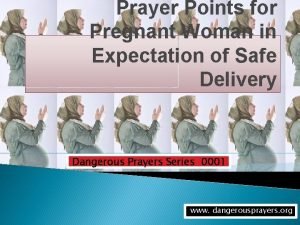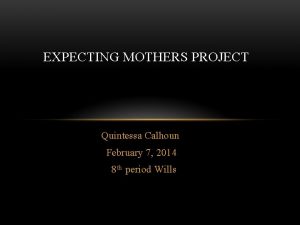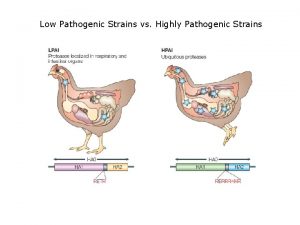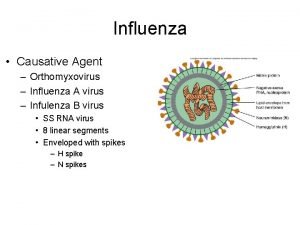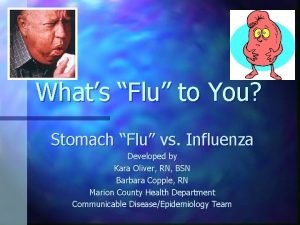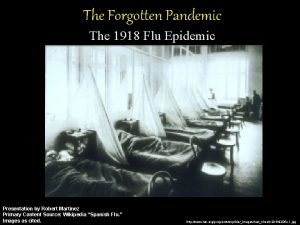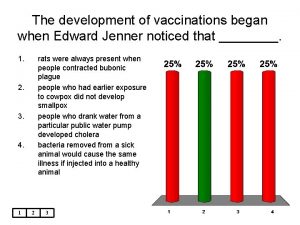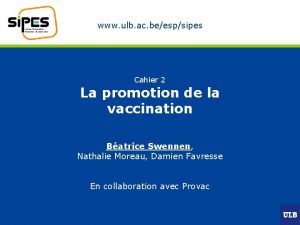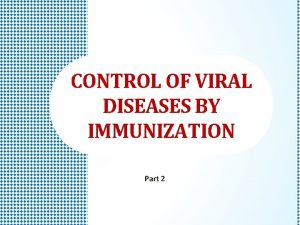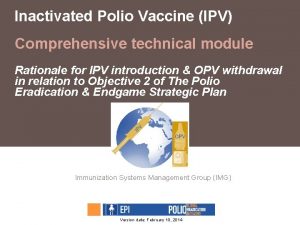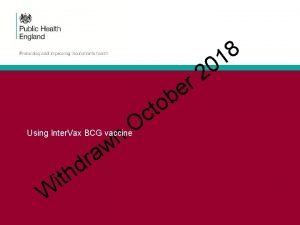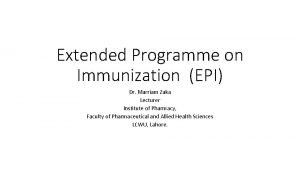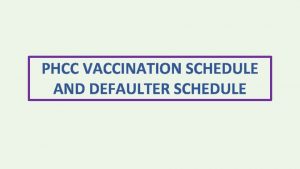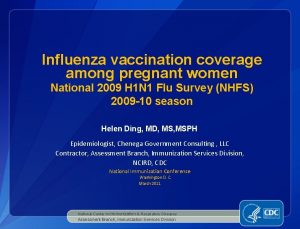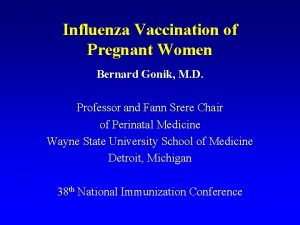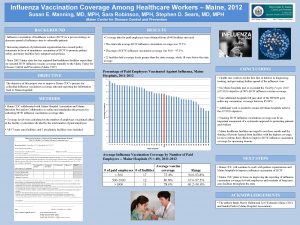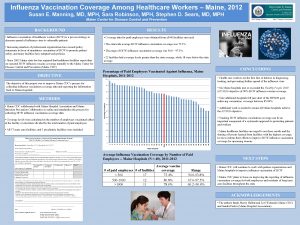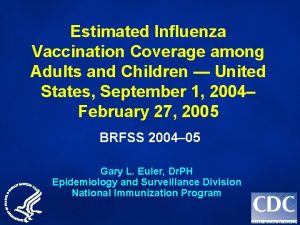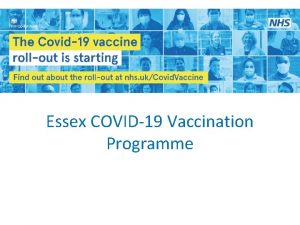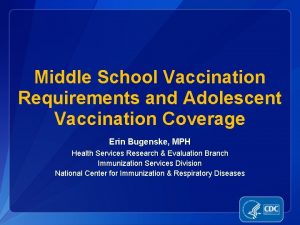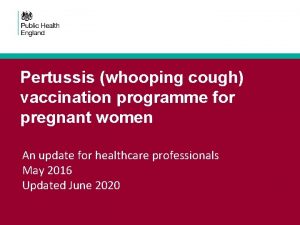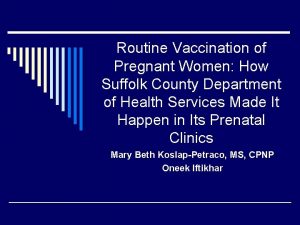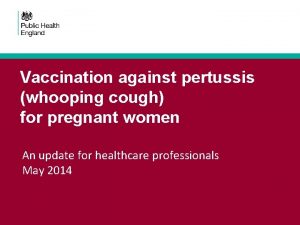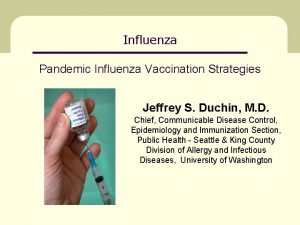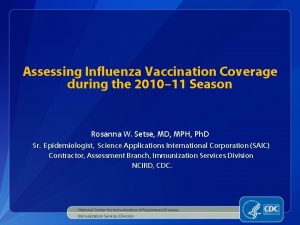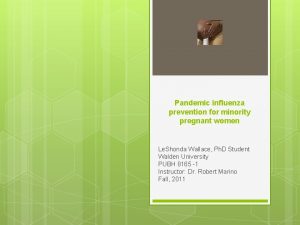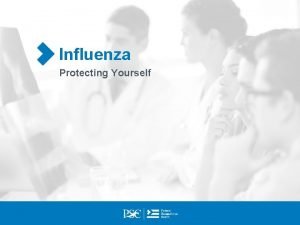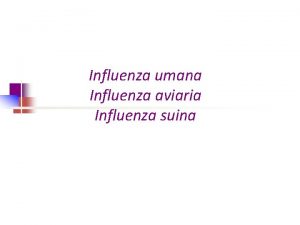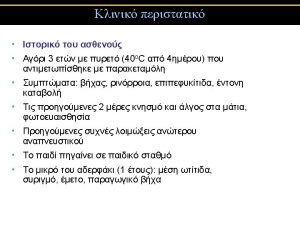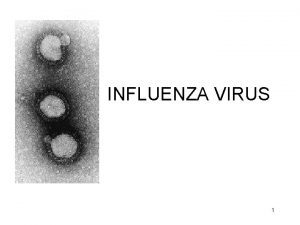Influenza Vaccination Coverage among Pregnant Women Results from






























- Slides: 30

Influenza Vaccination Coverage among Pregnant Women: Results from the Pregnancy Risk Assessment Monitoring System (PRAMS), Rhode Island, 2005 -2007 Hanna Kim, Ph. D, Virginia Paine, RN, MPH, and Rachel Cain, BA Rhode Island Department of Health

Who Should Get Flu Vaccination? • • • Children aged 6 months up to their 19 th birthday Pregnant women People 50 years of age and older People of any age with certain chronic medical conditions People who live in nursing homes and other long-term care facilities People who live with or care for those at high risk for complications from flu

Background • In May 2004, ACIP published new recommendations that all pregnant women or women who will be pregnant during influenza season should be vaccinated. • An inactivated flu vaccine (made from killed influenza virus) is considered safe during any stage of pregnancy. • Pregnant women should not use the nasal-spray flu vaccine, which is made with live, attenuated influenza virus.

Background • Pregnant women are at increased risk of developing serious complications from the flu. • Flu vaccination during pregnancy has the potential benefit of protecting infants from influenza infection. • Compared with other high risk populations, pregnant women have low rates of flu vaccination. – Nationally, only 13% of pregnant women received a flu shot during the 2006 -2007 flu season.

Study Objectives • Estimate influenza vaccination coverage levels among pregnant women in RI. • Estimate the proportion of health care providers who recommended/offered flu vaccination to their pregnant patients. • Determine the association between health care provider recommendation/offer and flu vaccine acceptance by pregnant women.

What is PRAMS? Pregnancy Risk Assessment Monitoring System • An ongoing, state-specific, population-based surveillance project sponsored by CDC. • Collects self-reported information by mail or telephone on maternal attitudes and experiences before, during, and shortly after delivery of a live infant. • Designed to be representative of women in the state who have delivered during the preceding 2 -6 months.

Data Collection • In phase 5 (2004 -2008) of RI PRAMS survey, two flu immunization questions were added to monitor flu vaccination coverage among pregnant women. – At any time during the most recent pregnancy, did a doctor, nurse, or other health care worker offer you a flu vaccination or tell you to get one? – Did you get a flu vaccination during your most recent pregnancy?

Data and Analysis • 2005 – 2007 RI PRAMS data were analyzed – Respondents: 4, 165 women (~1, 400 / year) – Weighted Response Rate: 73. 3% • Statistical Analyses – – Univariate analysis Chi-square tests for bivariate analysis Multivariate logistic regression SUDAAN software was used

Population Description Age : < 20 yrs (9%) 20 -29 yrs (47%) >= 30 yrs (44%) Mean: 28. 4 yrs Ethnicity: Hispanic (24%) Non-Hispanic (76%) Race: White (84%) Black (10%) Other (6%) Education: < 12 yrs (17%) 12 yrs (29%) > 12 yrs (54%) Income: < $10 K (18%) $10 K - < $25 K (20%) $25 K - < $50 K (20%) >= $50 K (42%) Marital Status: Married (60%) Unmarried (40%)

Population Description Insurance: Public (40%) Private (56%) Other (4%) Parity: 1 st birth (44%) 2 nd or later (56%) Pregnancy Intendedness: Unintended (37%) Intended (63%) WIC Status: WIC participants (44%) Non-WIC participants (56%) Pregnancy Experience Happy time (78%) Hard time (22%) All of these characteristics were examined with respect to flu vaccination during pregnancy using bivariate and multivariate analyses

Results

% of Women Who Had a Flu Shot during Pregnancy Rhode Island, 2005 -2007 P < 0. 2454 Source: RI Pregnancy Risk Assessment Monitoring System, 2005 -2007

% of Women Who Had a Flu Shot among Non-Pregnant Women aged 18 -44 years Rhode Island, 2005 -2007 P <0. 0001 Source: RI Behavioral Risk Factor Surveillance System, 2005 -2007

% of Women Who Had a Flu Shot Pregnant Women vs. Non-Pregnant Women Rhode Island, 2005 -2007 + Data are from the RI Pregnancy Risk Assessment Monitoring System (PRAMS), 2005 -2007 ++ Data are from the RI Behavioral Risk Factor Surveillance System (BRFSS), 2005 -2007

% of Women Who were Offered a Flu Shot Health Care Provider during Pregnancy Rhode Island, 2005 -2007 P < 0. 6358 Source: RI Pregnancy Risk Assessment Monitoring System, 2005 -2007 by

% of Women Who Had a Flu Shot during Pregnancy by Provider Recommendation Rhode Island, 2005 -2007 P < 0. 0001 Source: RI Pregnancy Risk Assessment Monitoring System, 2005 -2007

% of Women Who Had a Flu Shot during Pregnancy by Ethnicity Rhode Island, 2005 -2007 P < 0. 001 Source: RI Pregnancy Risk Assessment Monitoring System, 2005 -2007

% of Women Who Had a Flu Shot during Pregnancy by Education Rhode Island, 2005 -2007 P < 0. 001 Source: RI Pregnancy Risk Assessment Monitoring System, 2005 -2007

% of Women Who Had a Flu Shot during Pregnancy by Marital Status Rhode Island, 2005 -2007 P < 0. 001 Source: RI Pregnancy Risk Assessment Monitoring System, 2005 -2007

% of Women Who Had a Flu Shot during Pregnancy by Household Income Rhode Island, 2005 -2007 P < 0. 001 Source: RI Pregnancy Risk Assessment Monitoring System, 2005 -2007

% of Women Who Had a Flu Shot during Pregnancy by Pregnancy Intendedness Rhode Island, 2005 -2007 P < 0. 01 Source: RI Pregnancy Risk Assessment Monitoring System, 2005 -2007

% of Women Who Had a Flu Shot during Pregnancy Rhode Island, 2005 -2007 Maternal age, Race, Health insurance, Parity, WIC status, and Pregnancy experience were not significantly associated with flu vaccination during pregnancy

Multivariate Logistic Regression Model • Outcome Variable: - Having had flu vaccination during pregnancy • Potential Predictors: - Healthcare provider recommendation/offer Ethnicity Education level Marital status Household income Pregnancy Intendedness

Multivariate Logistic Regression Rhode Island, 2005 -2007 Factors associated with flu vaccination during pregnancy AOR (95% CI) Recommended/offered 48. 98 (34. 64 -69. 26)*** Not Recommended/offered reference Hispanic 1. 51 (1. 10 -2. 08)* Non-Hispanic reference *p<0. 05 ***p<0. 0001 Controlling for maternal education, marital status, household income, and pregnancy intendedness

Limitations • Self reported information • No separate analyses were performed for pregnant women with chronic health conditions and pregnant women without chronic health conditions • No detailed information on why they did not get a flu shot during pregnancy

Conclusions • Flu vaccination coverage rate among pregnant women in RI was higher than national rate. • Less than one third of women in RI had a flu shot during their most recent pregnancy and there was no significant change in flu vaccination rates during 2005 -2007. • Less than one half of healthcare providers in RI recommended/offered a flu shot to their pregnant patients and there was little change in the recommendation rates during 2005 -2007.

Conclusions • The likelihood of getting a flu shot during pregnancy was strongly associated with health care provider’s recommendation /offer. • Hispanics were more likely to have a flu shot during pregnancy. • All other factors (age, race, education, household income, marital status, pregnancy intendedness, health insurance, parity, WIC status, & pregnancy experience) were not independent predictors of flu vaccination during pregnancy.

Public Health Implication • Healthcare / prenatal care providers play an important role in the acceptance of flu vaccine by pregnant women. • RI Immunization program will share these results with healthcare / prenatal care providers to improve flu vaccination coverage among pregnant women.

RI Activities / Plans • RI provides thimerosal-free influenza vaccine to OB/GYN’s for their pregnant patients. • Focus groups will be conducted (WIC participants, minority women, OB/GYNs, etc) during April 2009 to identify barriers to flu vaccination among pregnant women. • Results of the focus groups will be used to develop educational materials for pregnant women and providers before the 2009/10 flu season. • Continue to monitor flu vaccination coverage among pregnant women using phase 6 of RI PRAMS (2009 -2013).

THANK YOU! Contact Information: Hanna Kim, Ph. D: Hanna. Kim@health. ri. gov
 Prayer points for pregnant mothers
Prayer points for pregnant mothers Vitagen company background
Vitagen company background 5 days of sample menus for pregnant women
5 days of sample menus for pregnant women Rimantidina
Rimantidina Metodo dei cerchi di heuvers
Metodo dei cerchi di heuvers Low pathogenic avian influenza
Low pathogenic avian influenza Influenza
Influenza Influenza vaccine dosage chart 2019-2020
Influenza vaccine dosage chart 2019-2020 Influenza a causative agent
Influenza a causative agent Stomach flu vs influenza
Stomach flu vs influenza Influenza ww1
Influenza ww1 The great influenza rhetorical analysis
The great influenza rhetorical analysis Is influenza a airborne disease
Is influenza a airborne disease Influenza virus replication
Influenza virus replication Influenza
Influenza Lokstallarna jönköping vaccination
Lokstallarna jönköping vaccination Vaccination a la defense
Vaccination a la defense Poultry vaccination schedule
Poultry vaccination schedule Directions for producing mhcs come from
Directions for producing mhcs come from Vaccination bruxelles
Vaccination bruxelles What is the difference between vaccination and inoculation
What is the difference between vaccination and inoculation Vaccination schedule in palestine
Vaccination schedule in palestine Sleeping princesses
Sleeping princesses Mandatory vaccination
Mandatory vaccination Pcv vaccine dose
Pcv vaccine dose Dog spay perry county
Dog spay perry county Niccolo paganini
Niccolo paganini Vaccination xard
Vaccination xard Epi schedule bangladesh
Epi schedule bangladesh Defaulter vaccination schedule
Defaulter vaccination schedule Dogmatism fallacy
Dogmatism fallacy
